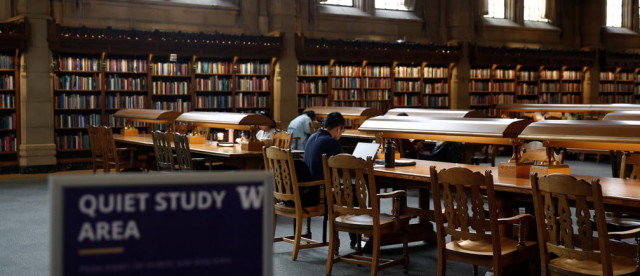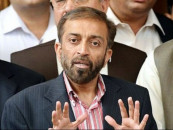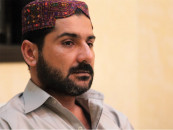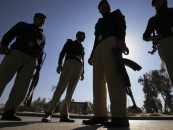Students, researchers flock to public libraries
Driven by competitive exams, lured by rare books, a niche group of readers have taken to Sindh’s libraries

Public libraries in Sindh often appear to receive a dwindling response - but in some, with every passing day, the number of readers is increasing.
Most visitors frequent libraries for exam season or research purposes. There are enough of those that most divisional libraries are crawling with readers on weekdays, with many coming early in the morning to grab a seat for the whole day.
“The library is the only place that helps me to achieve my target,” said Zeeshan Ahmed, who had made his way to the Liaquat Memorial Library in Karachi bright and early in order to find a desirable corner to read. Most of the readers at the library are regulars, he says.
The Liaquat Memorial Library is one of the 31 major libraries in the province that students, aspirants for competitive exams, scholars and other readers frequent regularly. Others include the Alam Daudpota Library in Hyderabad, Sir Shahnawaz Library in Larkana and Sachal Sarmast Library in Khairpur.
“These are the major libraries and most of the time, readers [can] hardly get a seat,” said libraries director Nazakat Ali Fazlani, adding that all divisional headquarters have libraries.
“We have established libraries in almost 80 per cent of district headquarters,” he said, speaking to The Express Tribune. Besides, 10 to 15 per cent of taluka headquarters also have libraries. “We have recently established six libraries and we plan to set up five more in coming months.”
Fazlani added that there were some sections for scholars and researchers, and some for rare collections. Khairpur’s library, for example, has a collection of hard-to-find books, which draws academics, he explained.
Sindh Culture and Antiquities Minister Syed Sardar Ali Shah, too, told The Express Tribune that the number of readers has gone up recently. Most of the libraries have internet facilities and books the readers want to read, he told.
“But the majority of readers are youngsters,” Shah pointed out. “These readers appear during different competitive exams. Overall, the number of general readers is not optimistic.”
But, Shah said, he was expecting that the number of readers will increase in coming years.
“Yes, unfortunately, we do not have general readers,” concurred culture, tourism, antiquities and archives secretary Akbar Laghari. “But the number of readers for competitive exams is going up,” he seconded.
“The library has produced more scholars and top officials than our universities and colleges,” commented Riaz Mastoi, a frequent visitor at the Sir Shahnawaz Library. “It provides the environment a reader needs.” He said that most readers from far-flung areas move closer to the main libraries and spend months frequenting the libraries to hit their targets. “The competitive exams have actually created a trend of going to libraries,” he opined.
Supporting Mastoi’s observation, Fazlani said that most of libraries were empty before the 1990s. “The number of readers increased after 2000s and [is] constantly going up,” he added. “In some libraries, we regularly have to set up more chairs.”
A reader at a library in the provincial capital explained that he could not afford books on his own, but at the library, even Internet access had become very easy for him. “I don’t think we have enough libraries,” he remarked, adding that he, too, didn’t see many general readers around. “The government needs to set up libraries in all localities which will ultimately encourage people to visit and read books.”
Published in The Express Tribune, November 23rd, 2020.


















COMMENTS
Comments are moderated and generally will be posted if they are on-topic and not abusive.
For more information, please see our Comments FAQ